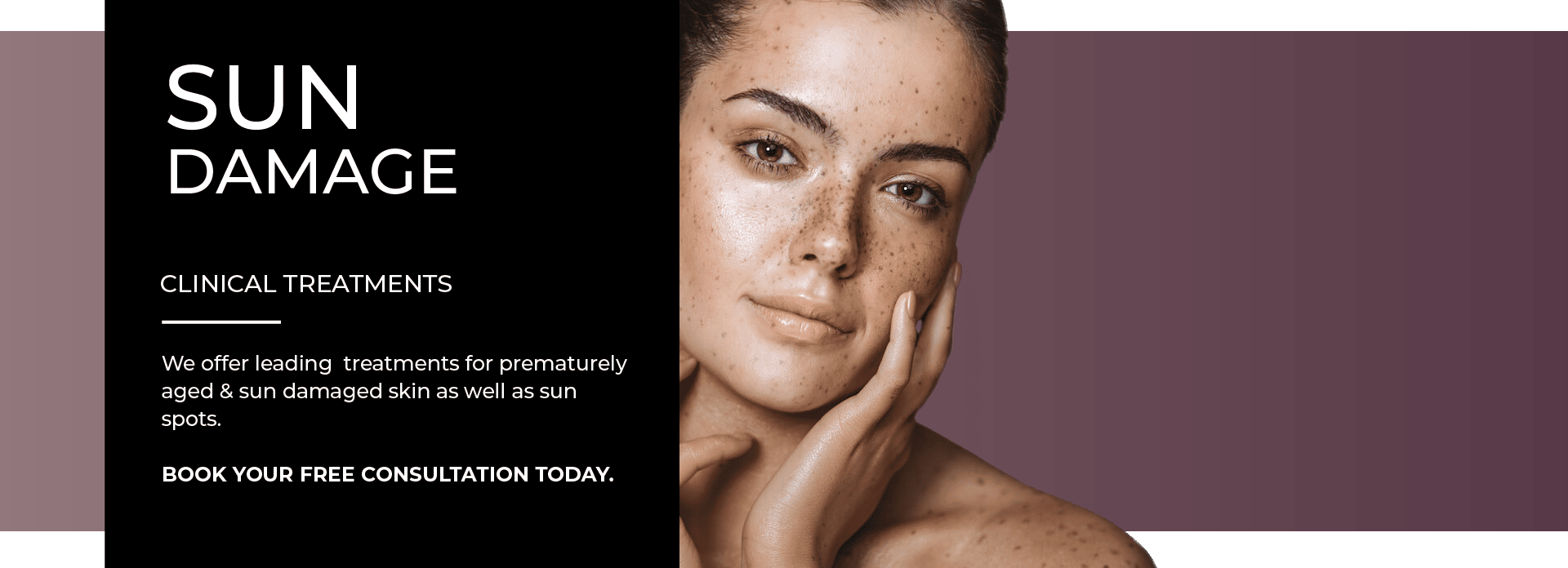
SUN DAMAGED SKIN REJUVENATING TREATMENTS
There are numerous skin treatment options that can heal sun damaged skin. To help reverse the signs of damaged skin and in conjunction with treatments, lifestyle changes are needed to prevent further damage.
TREATMENT AREAS

Forehead
1 of 8Cheeks
2 of 8Nose
3 of 8Chin
4 of 8Neck
5 of 8Chest
6 of 8Back of Hands
7 of 8Forearms
8 of 8SUN DAMAGE TREATMENTS
Improve Sun Damage without surgery or downtime.
APPROVED MEDICAL DEVICES
We only use medical grade registered and approved devices.
CERTIFIED DOCTORS AND NURSES
Highly trained medical team for professional treatments
Sun Damage and Ageing
Sun damage is responsible for 90% of visible signs of ageing.
Sunlight's harmful UVA rays deteriorate and damage the deep layers of skin called the dermis, which manufactures collagen. As we age, collagen tends to deteriorate, so it is important to take care of your skin. Increasing exposure to the harmful UVA rays of the sun can accelerate this deterioration, resulting in premature aging of the skin in the affected areas, most commonly the face and hands.
Sunlight helps us produce Vitamin D, which is essential for healthy bones, immunity, and serotonin production.
UV rays can, however, damage the skin if overexposed to them. The damage doesn't stop at a simple sunburn. Dullness, fine lines, and hyperpigmentation are all signs of sun damage.
Melanin, or skin pigment, is found in the epidermal (outer) layer of the skin. Melanin protects the skin from the harm of ultraviolet rays. Melanin production increases during tanning, and pigments become deeper. As your tan fades, skin cells shed and melanin levels drop again.
Over time, the habit of overexposure creates possible outcomes such as skin cancer and cell damage. Melasma and hyperpigmentation are other problems associated with prolonged sun exposure. As a result of sunspots, the appearance of the skin becomes age-related, something that makeup may not be able to hide completely.
The skin's main function is to protect the body from damage caused by exposure to UV (Ultraviolet) radiation from the sun. However, after years of exposure to UV radiation, the skin becomes damaged, a condition called photodamage. Depending on the person, sun damage has a broad range of visible effects on the skin surface that may present differently and will develop at a different rate.
The sun can damage both the surface epidermal skin layers, which contain pigment cells, and the deeper dermal layers, which contain blood vessels and collagen. Thus, the main changes in our skin associated with sun damage are pigmentation (pigmentation and redness), contour (lines and wrinkles), and texture (dryness and roughness).
Sunlight can also damage other skin cells, including basal and squamous cells, and if the DNA in these cells is damaged, skin cancers can result, such as BCC (Basal cell carcinoma) and SCC (Squamous cell carcinoma). When the pigment producing cells (melanocytes) lose their DNA, Melanoma may develop.
